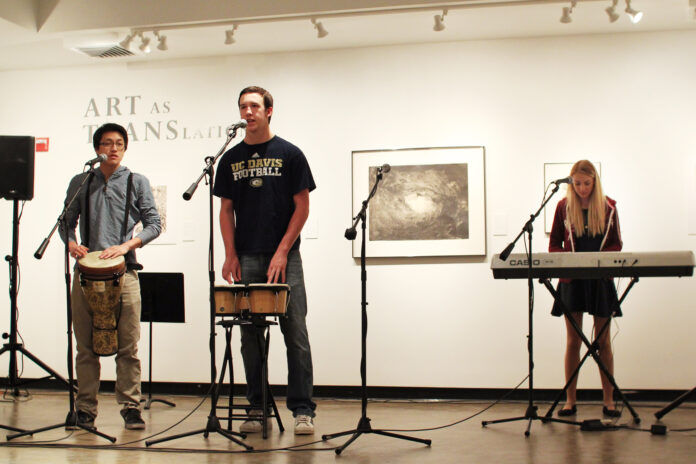At what point does a musical composition have anything to do with water management and soil sciences? For most of us, never, but for the students in UC Davis’ academic course “Earth Water Science and Song” (Science and Society 42), they intertwine perfectly. For the past five years, UC Davis has offered this cross-disciplinary course for undergraduate students interested in understanding the connections between music and science.
Science and Society 42 (SAS 42) is part of the Art-Science Fusion Program at UC Davis. The program was founded in the early 2000s by Professor of entomology Diane Ullman and local artist Donna Billick in hopes of teaching students how to use creativity to spark innovation in both science and the arts. In 2009, SAS 42 was added to the roster of classes that would be a part of this unique academic venture.
Professor Emeritus of land, air and water sciences, Wendy Silk, co-founded the class with a former graduate student. Silk, who said she has a passion for music and science, explained that students often view music as simplistic, when it’s really just as complex as science. She said she believed that by putting the two subjects side-by-side in the same course, students would not only see the similarities between the two, but that they would reap the benefits of mixing these disciplines.
“In my decades of teaching, my greatest frustration was the anxiety and boredom that science classes seemed to trigger in the students,” Silk said. “With music and performing, I find that they’re almost always uplifted from the stress. I realized that if we could bring music into the classroom and have the students work in ensembles and bring their own creativity to the subject, then it would be a good way to get them to enjoy learning.”
Students in the class attend lecture in the morning twice a week where they learn about nutrient cycles, water, carbon and nitrous cycles, resource management, pollution, global climate change and water management. The students then meet for two hours once a week for music discussion where they learn basic music concepts (i.e. harmony, melody, rhythm), lyric writing and how to perform in public. They are also taught how to deal with aspects of performing like stage fright, physical presentation and concert planning.
The students are expected to either compose or adapt a song for their final project that is connected to one of the scientific focuses they’ve learned about in the course. The purpose of this is to show that music helps to cement knowledge in the students’ minds more effectively than just reading from a textbook.
Second-year animal science and management major Jack Merwin said the class has helped him retain knowledge he might not have been able to remember if he were in a normal science class.
“Science and music are two different worlds, but in this class they come together in a very cool and weird way,” Merwin said. “I think it’s interesting to see that by learning to play music intertwined with science facts not only allows the performers to learn this information, but allows the audience [that is listening] to learn too. When a song gets stuck in their head they’re forcing themselves to learn those lyrics, thus learning those facts.”
The class is also considered unique because it brings together students from different disciplines that might not otherwise collaborate in day-to-day life. Students are encouraged to share their unique talents and skills, whether they are scientific or artistic, in order see the benefits of both academic disciplines.
Third-year ethnomusicology graduate student and SAS 42 teaching assistant, Sarah Messbauer, said she also has a passion for science and that she wants to encourage students to venture outside of their comfort zone with this course.
“It’s really important to work across disciplines and learn how to think outside of the box no matter what field you’re in,” Messbauer said. “Life isn’t in these neat little categories, life is all mixed up, so the more that you’re able to make connections across fields, the better off you’ll be in life.”
The course will have its final project showcase on March 14 in the Nelson Gallery. The show will consist of students’ original and adapted compositions and will cover the scientific topics they’ve discussed during the quarter. The show starts at 7 p.m. and admission is free.





